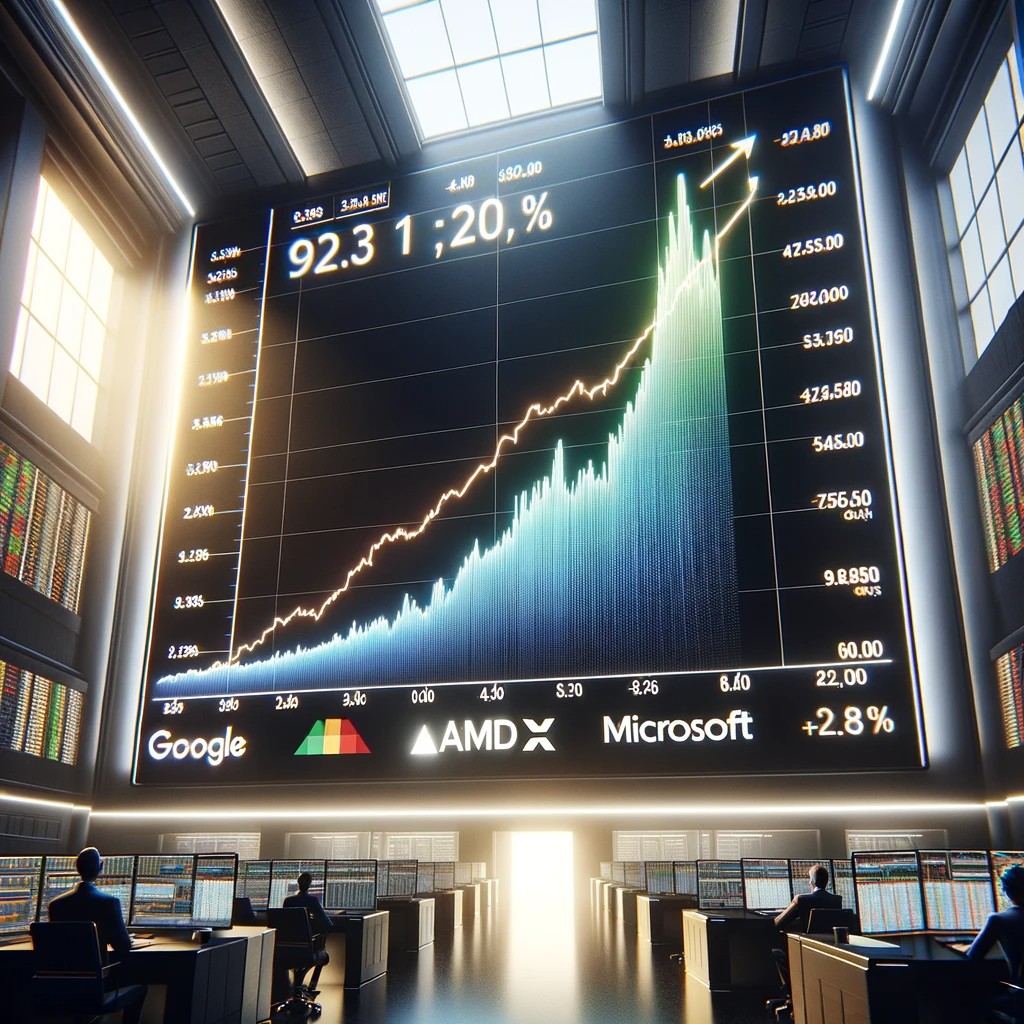In the domain of tech giants, where artificial intelligence (AI) stocks hold the promise of transforming industries, Microsoft Corp., Alphabet Inc.’s Google, and Advanced Micro Devices Inc. (AMD) find themselves under scrutiny as they grapple with meeting AI stock expectations set by investors. Despite concerted efforts to embed AI technologies into their respective products, the recent financial results and forecasts unveiled by these companies have left shareholders wanting more, causing a dip in their stock prices.
Microsoft and Google – AI progress vs. investor expectations
In the competitive AI and cloud computing landscape, Microsoft and Google vie for dominance, leveraging AI for innovation and revenue growth. Microsoft’s latest quarterly report showcased robust revenue growth, with a notable 30% surge in Azure cloud-services revenue attributed to AI demand. CFO Amy Hood highlighted AI’s significant contribution, accelerating growth by 6 percentage points, earning praise from analysts like Karl Keirstead. However, Microsoft’s stock faced downward pressure in late trading as investors sought clearer insights into AI’s future financial impact.
Similarly, Google, a formidable AI competitor, faced challenges balancing AI ambitions with concerns over a slowdown in its core advertising business. While Google’s quarterly report showed AI advancements in search and cloud computing, investors remained cautious due to signs of weakness in advertising revenue. Analysts, including Evelyn Mitchell-Wolf, raised concerns about the impact of advertising revenue fluctuations on Google’s AI initiatives. The reliance on advertising revenue underscores the need to stabilize this segment to support broader AI-driven endeavors, raising questions about Google’s ability to sustain AI innovation while addressing financial concerns.
AMD’s MI300 AI Accelerator Chip – Meeting demand amidst investor skepticism
On the semiconductor front, Advanced Micro Devices Inc. (AMD) has emerged as a significant player, drawing attention and investor interest. While the company’s stock reflects optimism about its AI technologies, a recent sales forecast shortfall for the current quarter raised concerns among investors. Despite this setback, AMD’s highly anticipated MI300 AI accelerator chip shows promise, surpassing initial sales projections and generating industry enthusiasm. However, skepticism from investors, fueled by certain Wall Street projections exceeding the company’s revised forecasts, led to a notable decline in AMD’s stock in late trading, highlighting the challenge of aligning AI progress with investor expectations.
Balancing technological innovation with market realities presents a formidable task for AMD in navigating the dynamic landscape of AI. Anticipation and skepticism surround the company’s efforts to capitalize on the growing AI market, revealing the intricate relationship between technological advancements and investor sentiment. While the success of the MI300 chip indicates AMD’s potential in the AI computing space, the disparity between sales forecasts and market expectations emphasizes the need for transparent communication and alignment. To sustain growth and competitiveness in an AI-driven landscape, AMD must adeptly manage these challenges, delivering on AI promises while effectively addressing investor perceptions and market dynamics.
Balancing AI stock expectations
Tech giants like Microsoft, Alphabet, and AMD are facing investor scrutiny as they strive to integrate artificial intelligence into their operations. Despite advancements in AI technology, these companies are challenged to meet market expectations while demonstrating the financial impact of their AI initiatives. Striking a balance between showcasing AI progress and managing investor demands is crucial for their long-term growth. Transparency, strategic planning, and responsiveness to market dynamics are essential elements in achieving this balance. As the AI landscape evolves, tech giants must remain proactive and adaptive to leverage AI technologies effectively and emerge as leaders in shaping the future of technology and commerce.





